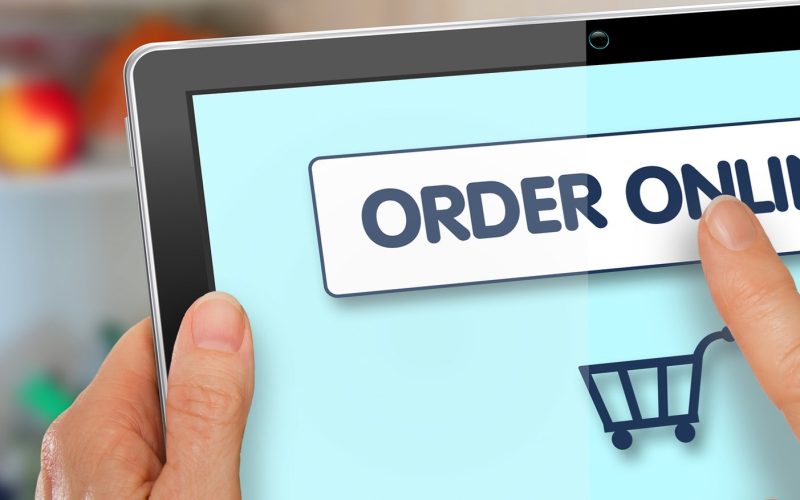In the modern retail landscape, small businesses face increasing competition and evolving consumer expectations. As more customers turn to online shopping for convenience, adopting an online ordering platform for small business becomes essential. These platforms not only streamline the ordering process but also significantly boost sales. This article explores how online ordering systems enhance sales for small firms, highlighting their key features, benefits, and best practices for implementation.
Understanding Online Ordering Platforms
An online ordering platform is a digital solution that allows customers to place orders via a website or mobile app. These platforms are particularly beneficial for small businesses, offering various features that improve customer experience and operational efficiency. From restaurants to retail shops, online ordering systems can cater to a wide range of industries.
Key Features of Online Ordering Platforms
- User-Friendly Interface: A simple, intuitive design makes it easy for customers to navigate through products and services.
- Mobile Compatibility: Many consumers prefer to shop on their mobile devices, so an effective platform should be mobile-friendly.
- Secure Payment Processing: Integrated payment solutions ensure that customer transactions are secure, building trust and encouraging purchases.
- Real-Time Inventory Management: These platforms can sync with inventory systems to provide real-time stock updates, reducing the chances of stockouts.
- Customization Options: Businesses can tailor the platform to reflect their brand, creating a cohesive customer experience.
How Online Ordering Platforms Increase Sales
1. Expanding Customer Reach
One of the most significant advantages of an online ordering platform is the ability to reach a broader audience. Traditional storefronts are limited by physical location, but an online presence allows small firms to attract customers from various geographical areas.
- 24/7 Availability: Unlike brick-and-mortar stores, online platforms are always open, enabling customers to place orders anytime. This convenience can lead to increased sales, especially during peak shopping times.
- Marketing Opportunities: Online platforms allow businesses to leverage digital marketing strategies, such as SEO, social media marketing, and email campaigns, to attract new customers.
2. Enhancing Customer Experience
Customer experience is crucial to retaining clients and driving sales. An online ordering platform can significantly enhance the shopping experience in several ways:
- Convenience: Customers can browse products and place orders from the comfort of their homes, making the purchasing process quick and hassle-free.
- Personalization: Many platforms offer personalized recommendations based on previous purchases, creating a tailored shopping experience that encourages repeat business.
- Order Tracking: Customers appreciate transparency. Online ordering systems often provide real-time order tracking, which enhances customer satisfaction and builds trust.
3. Streamlining Operations
Efficiency in operations not only saves time but also contributes to higher sales. Online ordering platforms simplify various aspects of the sales process:
- Automated Ordering: With automated systems, businesses can reduce the time spent on manual order entry, minimizing errors and speeding up processing times.
- Integrated Inventory Management: Real-time inventory syncing helps businesses manage stock levels effectively, ensuring popular items are always available for purchase.
- Reduced Labor Costs: By automating the ordering process, small firms can save on labor costs associated with staff handling phone orders or in-person transactions.
4. Increasing Average Order Value
Online ordering platforms can encourage customers to spend more per transaction through various strategies:
- Upselling and Cross-Selling: Businesses can implement features that suggest complementary products during the checkout process, encouraging customers to add more items to their carts.
- Promotions and Discounts: Offering discounts on larger orders or free shipping for a minimum purchase can incentivize customers to increase their order value.
- Loyalty Programs: Many platforms allow businesses to set up loyalty programs, rewarding customers for repeat purchases and encouraging them to spend more.
5. Leveraging Data Analytics
Online ordering platforms often come equipped with analytics tools that provide valuable insights into customer behavior and sales trends:
- Customer Insights: Businesses can analyze data to understand purchasing patterns, preferences, and peak shopping times, enabling them to tailor marketing efforts and inventory management accordingly.
- Performance Tracking: Monitoring sales performance through the platform helps small firms identify which products are bestsellers and which may need promotional support.
- Informed Decision-Making: Data-driven insights allow businesses to make informed decisions about marketing strategies, product offerings, and pricing.
Best Practices for Implementing an Online Ordering Platform
1. Choose the Right Platform
Selecting the right online ordering platform for small business is crucial for success. Consider factors such as ease of use, integration capabilities, and cost. Look for platforms that offer features tailored to your industry and business needs.
2. Optimize for Mobile Users
Given the growing number of consumers shopping via mobile devices, ensure that your online ordering platform is mobile-friendly. A responsive design improves user experience and increases the likelihood of conversions.
3. Provide Excellent Customer Support
Offering excellent customer support is vital for maintaining customer satisfaction. Make sure your platform has support features such as live chat, FAQs, and easy access to contact information.
4. Promote Your Online Ordering System
Once your online ordering platform is up and running, promote it through various channels. Use social media, email newsletters, and in-store signage to inform customers about the availability of online ordering.
5. Gather Feedback and Make Improvements
After launching the platform, solicit feedback from customers to identify any challenges they may encounter. Use this feedback to make continuous improvements to enhance the user experience.
6. Monitor Performance
Regularly review analytics from your online ordering platform to track performance metrics. This data will help you identify trends, measure success, and make informed decisions for future marketing strategies.
Conclusion
Investing in an online ordering platform for small business can significantly boost sales and improve customer satisfaction. By expanding your reach, enhancing the customer experience, streamlining operations, and leveraging valuable data insights, your business can thrive in today’s competitive marketplace. As you consider implementing an online ordering system, prioritize the features that align with your business goals and customer needs. With the right platform in place, your small business can unlock new opportunities for growth and success.










